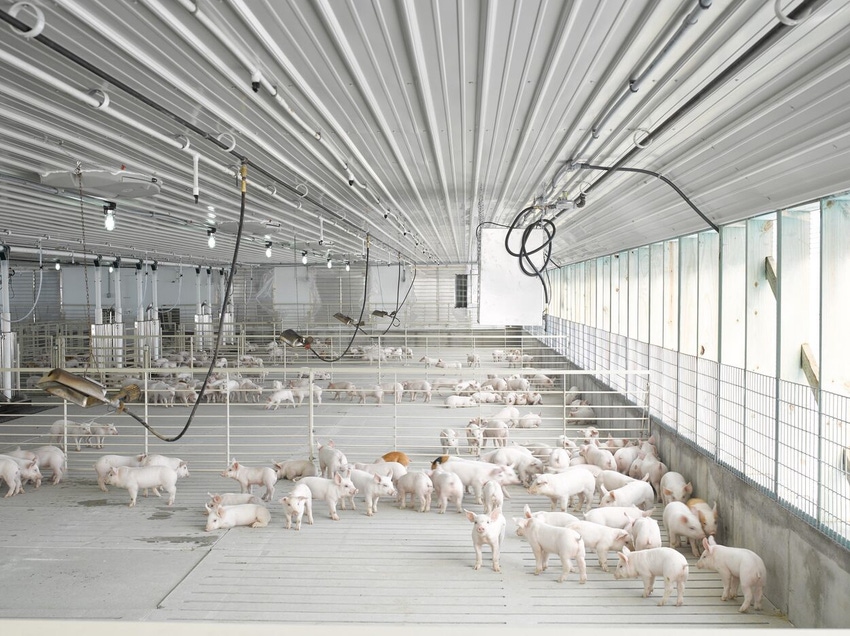Understanding the four types sheds some light on the fact that innovation has been a part of the evolution of swine production for decades.
April 13, 2022

Innovation seems to be the "talk" in the industry these days. Innovation has rich implications for the future of protein production. Yet it is difficult to advance the innovation cycle due to the limitations of biological manufacturing and its unpredictable behavior.
The six-month business cycle of wean to market and the unpredictable variables of a biological machine add complexity to the value-proofing process. Many have experienced the fury of a mid-winter PRRS break. There is no app or technology to prevent that.
There are four specific types of innovation that give context for understanding how to implement a technology. Understanding the four types helps a person or business to know how to prioritize, evaluate and execute a particular innovation with confidence. The definition of these four types also gives context to evaluating the producer's relationship with existing companies in a way to measure the innovation journey of that company.
Understanding the four types sheds some light on the fact that innovation has been a part of the evolution of swine production for decades.
Here are the four types of innovation.
Disruptive Innovation - This is the innovation everyone talks about because it has a large impact on society. The stories of bootstrapped founders who dropped out of college and hit the big time like Facebook, Uber and Twitter. Fast growth, hockey stick returns and billions in wealth created. These companies provide high-impact results that fundamentally change the way we do things forever. They focus on overlooked segments of the business and find more affordable and impactful solutions to solve problems.
Incremental Innovation - The pork industry has been practicing incremental innovation for decades. This innovation brought pigs indoors. It created genetic strategies that harnessed genetic potential and improvement incrementally over decades. It helped producers reduce stagnation and allowed for increased margins through slow and steady incremental increases in efficiency and sustainability.
Sustaining Innovation - Sustaining innovation is best used to protect the company's position in the marketplace. Sustaining innovation takes the cumulative outcomes of incremental innovation and focused on new features that differentiate the product from the competitors. This is evident in commoditized companies that find a window of opportunity to differentiate a mature product. There has been a plethora of T-Shirt and dress shirt innovations with companies like Untuck It.
Radical Innovation - Radical innovation typically creates something that completely changes the industry. This innovation fundamentally changes how the company interacts with the marketplace. The firm's organizational behaviors and creative expression fuel the new ideas for commercialization. These trailblazers are often looked at with skepticism until the innovation takes root in the marketplace. Once adapted, exponential growth takes place. Examples would be things like automobiles, airplanes and computers.
Holistic approach
Each of these four types has been utilized by businesses throughout history to deliver us the products and services we enjoy today. The understanding of this as it pertains to both innovators and customers is crucial to maximizing the value of innovation. Ignoring them can cause a great disadvantage in the marketplace.
Innovation applied properly can ensure a company of maintaining value in legacy products. Creating a culture of innovation allows the legacy products to act as fertilization for disruptive and radical innovations to take place. This provides an opportunity for the producer to evaluate in stages and partner with companies on solutions.
Each of these categories has value, and a system that combines all four creates robust and effective innovation while uncovering blind spots to potential market or consumer shifts.
Without incremental innovation, the products we rely on can leave us vulnerable in the marketplace because we fall behind. If radical or disruptive innovations are absent, a company misses the opportunity to deliver value and renders itself irrelevant. A combination of all four creates a sustainable and valuable solution for both present and future success.
Summit SmartFarms is devoted to creating irresistible places to work in agriculture by simplifying the complex by equipping people to optimize performance through technology. If you would like to learn more about how Summit SmartFarms can help your organization, you can email Jon Hoek.
Source: Jon Hoek, who is solely responsible for the information provided, and wholly own the information. Informa Business Media and all its subsidiaries are not responsible for any of the content contained in this information asset.
You May Also Like



